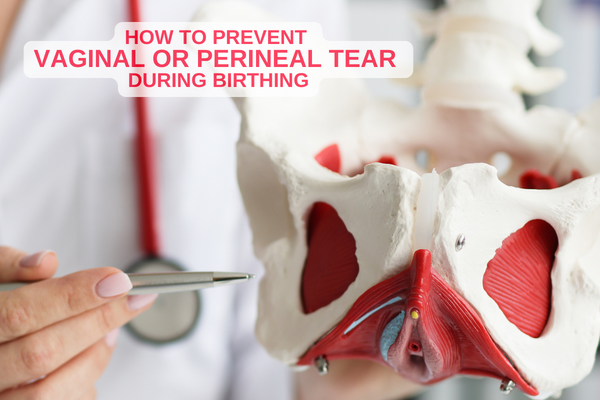Water offers numerous calming advantages and provides solace and ease, and waterbirth relies on this quality of water to provide comfort through the labour and childbirth process. An increasing number of women have discovered their preference for the soothing qualities of warm water over a conventional birth. Nowadays, numerous hospitals and birthing centers extend the opportunity for clients to labor and/or give birth in a water environment. In this blog, we will explore the wonders of waterbirth, its benefits, considerations, and why some parents are choosing this method to welcome their little ones into the world.
What Is Waterbirth?
What is water labor?
"Doesn't the baby try to breathe under water?"
No, that’s not the case. Babies start breathing only in response to changes in temperature and pressure. In a waterbirth, the water temperature in the tub is kept between 95 and 101 degrees. Given that the water in the birthing tub is maintained at body temperature, the baby doesn’t commence breathing until it encounters a change in air pressure. The baby transitions from the amniotic fluid in the womb to the welcoming warmth of the tub water. Subsequently, the baby is carefully lifted out of the water, allowing the mother to hold the baby immediately. The umbilical cord is still attached, ensuring a continued supply of oxygen through the cord. Once the baby is out of the water it takes its first breath. Care is taken to ensure their face is not submerged again.
Who Can Opt for a Water Birth?
There are conditions a pregnant person is required to meet in order to qualify for a water birth: An uncomplicated pregnancy with low blood pressure, over 37 weeks gestation, and a baby with a head down – is required for a water birth. High-risk or complications in labor often require continuous monitoring of the fetus or immediate intervention, which can only be accomplished outside of the water.
Water Immersion or Waterbirth Is Not Recommended in case of:
- Any abnormal vaginal bleeding.
- Maternal fever >38.0°C (100.4°F).
- Any condition that requires continuous fetal monitoring.
- Active herpes simplex lesion, hepatitis B or C, HIV.
- Musculoskeletal issues or reduced mobility that may prevent the woman from leaving the bath quickly as necessary.
- Clinical judgment of the attending provider that the woman’s condition or the fetal status prohibits ongoing immersion.
It is therefore advisable to talk to your healthcare provider to understand your suitability for a waterbirth, the risks as well as the reality of water birth delivery. While it is a very personal decision, it requires much thought and research.
Water birth benefits for the mother
- Natural Pain management using the soothing quality of water
- Support to relax tense muscles
- Decreased adrenaline production, allowing for a shorter labor
- Easier mobility during labor and delivery due to the buoyancy of water
- Reduced pressure on the abdomen
- Increased sense of independence, power and autonomy during labor and delivery
- Encourages immediate skin-to-skin and this helps in initating breastfeeding at birth
- Reduced need for medical intervention and pain medication
- Reduced rate of Cesarean section
- Reduced rate of episiotomy and perineal tears
Water Birth advantages for the baby:
- An easier, gentler transition from mother’s womb to the warm waters of the tub
- Decreased trauma at birth
Potential Risks of Water Birth
While waterbirth is generally considered safe when conducted under the appropriate conditions and supervised by trained healthcare professionals, there are still some risks and potential complications associated with this method of childbirth. It’s crucial to be aware of these risks and discuss them thoroughly with your healthcare provider if you are considering a waterbirth. Some of the potential risks of waterbirth include:
1. Infection: There is a risk of infection for both the mother and the baby during a waterbirth. The warm water in the birthing tub can provide a suitable environment for the growth of bacteria. Proper maintenance of hygiene and cleanliness in the birthing pool is essential to mitigate this risk.
2. Monitoring Difficulties: Continuous monitoring of the baby’s heart rate can be challenging in a waterbirth setting. While there are waterproof monitoring devices available, they may not provide as accurate readings as traditional electronic fetal monitoring.
3. Baby could inhale water: There is a theoretical risk that the baby could inhale water during a waterbirth, which could lead to aspiration pneumonia. However, this risk is relatively low when the birth is well-managed, and the baby’s head is brought above the water’s surface promptly.
4. Maternal Complications: Waterbirth may not be recommended for individuals with certain medical conditions, such as active herpes infection, significant vaginal bleeding, or complications during pregnancy, as it can increase the risk of complications.
5. Cord Prolapse: There is a small risk of umbilical cord prolapse during a waterbirth, where the cord slips ahead of the baby. This can potentially lead to fetal distress and necessitate emergency interventions.
6. Temperature Control: Maintaining the water temperature in the birthing tub is crucial. Water that is too hot can cause overheating for the baby, while water that is too cold can lead to hypothermia. Monitoring and adjusting the water temperature is essential.
It’s important to note that the risks associated with waterbirth can vary depending on individual circumstances, the quality of healthcare provided, and the specific protocols in place at the birthing facility. If you are considering a waterbirth, discuss your options and concerns thoroughly with your healthcare provider to make an informed decision about the most suitable birthing method for you and your baby.
Costs of Water Birth
There can be an additional charge on top of the usual maternity packages if you were to opt for waterbirth in a hospital. Do check if this would be covered by your insurance. If you choose to have a doula or midwife attend the birth in the hospital their fees will also be an additional amount on top of the standard maternity package.
But if you are having your water birth delivery at a birthing center, the fees of the midwife might be included in the fees you pay at the facility and there might be just the additional charge for the tub.
Conclusion
Ready to Dive Deeper Into Your Birthing Journey?
You’ve just explored the science behind water birth, but we know you might still have questions or perhaps, even some apprehensions. At Veira Life, we’re committed to supporting you every step of the way. From natural births or water birth to C-sections, we equip you with the knowledge and expert guidance you need to make informed choices for you and your baby.
Why go through this life-altering experience alone when you could have a dedicated Veira Coach by your side? Our coaches are certified professionals, ready to answer all your questions and ease your worries.
Register now to get paired with your personal Veira Coach and start the journey to empowered motherhood today!
FAQs
Water births can provide a more relaxing, buoyant environment which may help make the labor pain bearable for some, but the sensations are subjective and varies person to person.
Water births may lower cesarean rates and stress incontinence post-delivery according to some studies. However, the best method depends on individual health and comfort preferences.
Water birth disadvantages include risk of infection, risk of umbilical cord detachment, and increased risk of perineal tears.
Yes, water birth is generally safe. However, not everyone will prefer it during labor and should be offered under professional guidance. Always consult with your healthcare provider.
A baby born underwater should be brought to the surface within a minute, ensuring its face does not go back underwater, the baby starts to breathe when their face touches the air.







